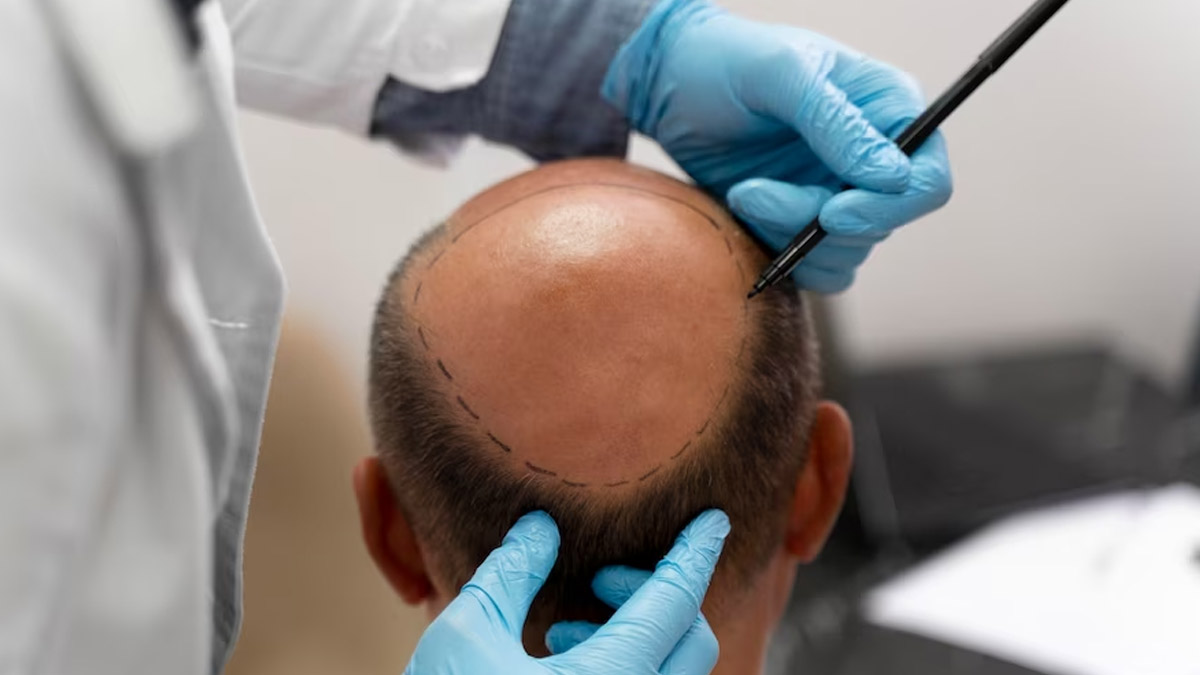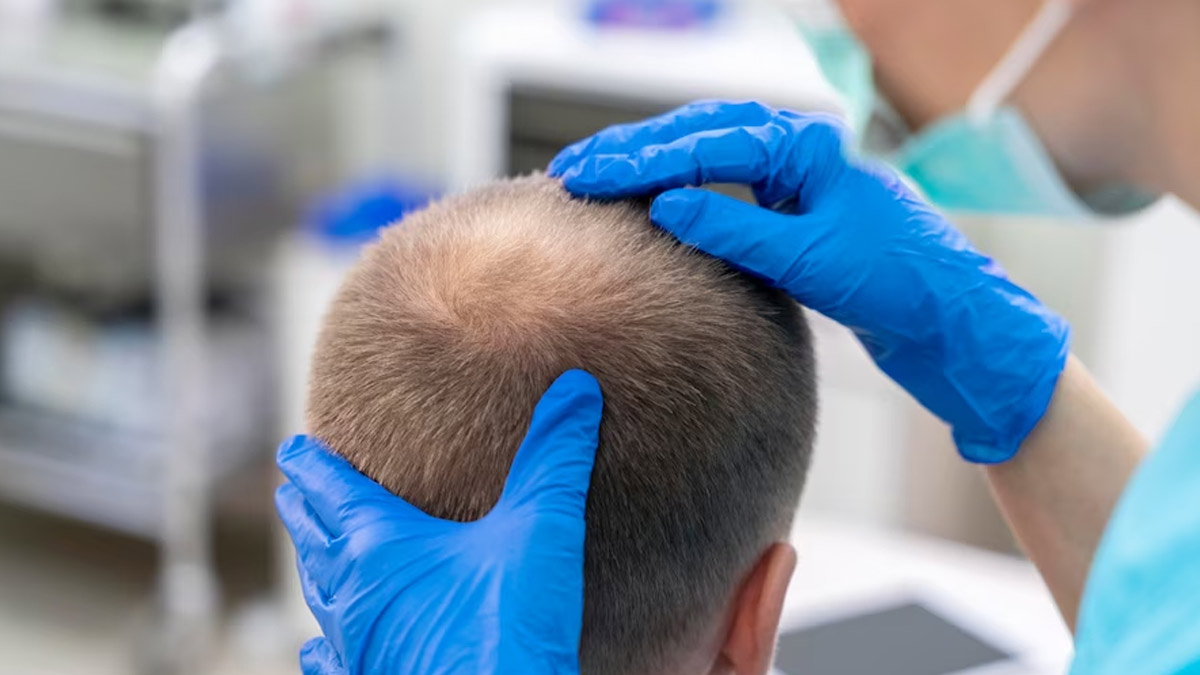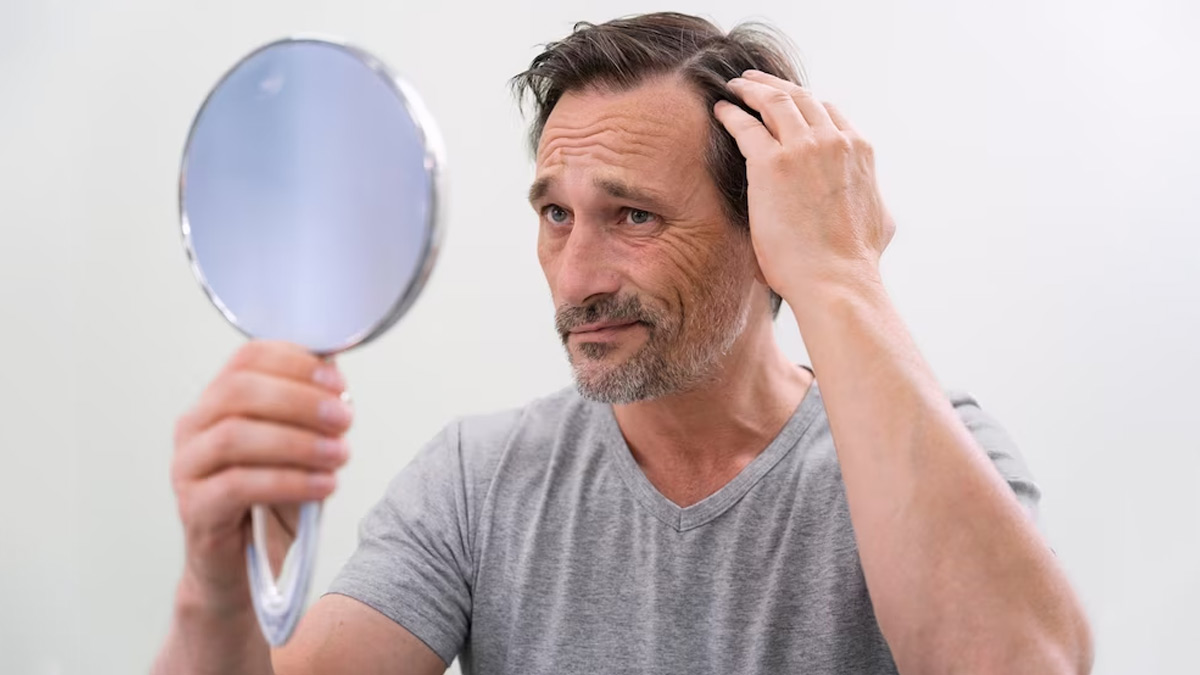
Losing hair, especially at the crown of your head, can be a distressing experience for those who are conscious about their looks. So, it's essential to recognise the signs early and take appropriate action.
Let’s Understand Crown Balding
“Crown balding, also known as vertex baldness or simply a bald spot at the back of the head, is a common pattern of hair loss in men. It typically starts as a small, circular area of hair thinning or recession at the crown of the head,” said Dr SK Gupta, Dermatologist, DMCH, Darbhanga, Bihar, adding, while it can occur at any age, it's more prevalent as people get older.
Signs of Crown Balding
- Thinning Hair: One of the first signs of crown balding is the gradual thinning of hair at the top of your head. You might notice that your hair feels finer or less dense in this area.
- Hair Recession: The hairline at the back of your head may recede, creating a V-shaped or horseshoe pattern. This is often more noticeable when your hair is wet or when it's combed or styled.
- Visible Scalp: As the hair in the crown area becomes thinner, your scalp may become more visible, especially under certain lighting conditions.
- Increased Shedding: You may notice more hair in your comb, brush, or on your pillow when you wake up in the morning.
- Change in Hairstyle: You might find that your usual hairstyle no longer covers the thinning or balding area effectively.
Also read: 5 Popular Methods To Treat Baldness In Men
What Causes Crown Balding?
Crown balding is primarily influenced by genetics and hormonal factors. It's often associated with androgenetic alopecia, commonly known as male-pattern or female-pattern baldness. As per study, hormones like dihydrotestosterone (DHT) play a significant role in this type of hair loss, which tends to run in families.

What to Do If You Suspect Crown Balding
A Dermatologist can help: If you suspect crown balding, it's important to seek professional advice. A dermatologist or hair specialist can diagnose the condition and provide personalised guidance.
- Explore Treatment Options: Depending on the severity and cause of your crown balding, various treatment options are available. These may include topical solutions like minoxidil, prescription medications, or hair transplant surgery.
- Consider Styling: In the early stages of crown balding, certain hairstyles can help conceal the thinning area. Consulting a hair stylist experienced with hair loss can be beneficial.
- Maintain a Healthy Lifestyle: A balanced diet, regular exercise, and stress management can support overall hair health. Adequate nutrition is particularly important for strong, healthy hair.
- Avoid Harsh Hair Practices: Over-styling, excessive heat, and harsh chemicals can damage your hair. Be gentle when grooming your hair to minimise further stress on weakened follicles.
- Explore Cosmetic Options: Some people may find temporary relief from crown balding through the use of hair fibres, concealers, or scalp micropigmentation to create the illusion of fuller hair.

Also read: Can Castor Oil Help Treat Baldness?
While crown balding can be emotionally challenging, many options are available to manage and treat this condition. Seeking professional advice, maintaining a healthy lifestyle, and exploring appropriate treatments can help you regain confidence and maintain healthy, happy hair. Remember that you're not alone in dealing with crown balding, and there's support and information available to guide you through this journey.
How we keep this article up to date:
We work with experts and keep a close eye on the latest in health and wellness. Whenever there is a new research or helpful information, we update our articles with accurate and useful advice.
Current Version